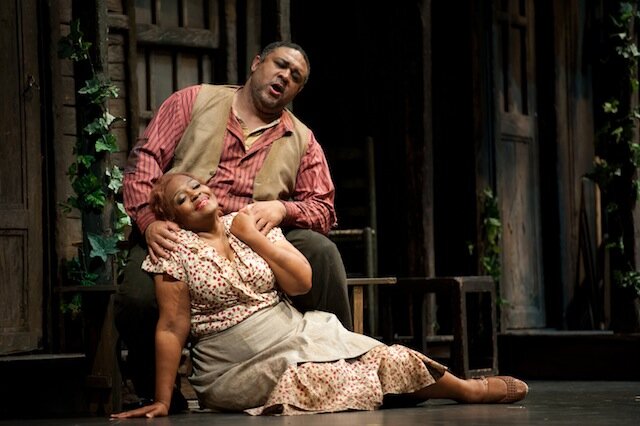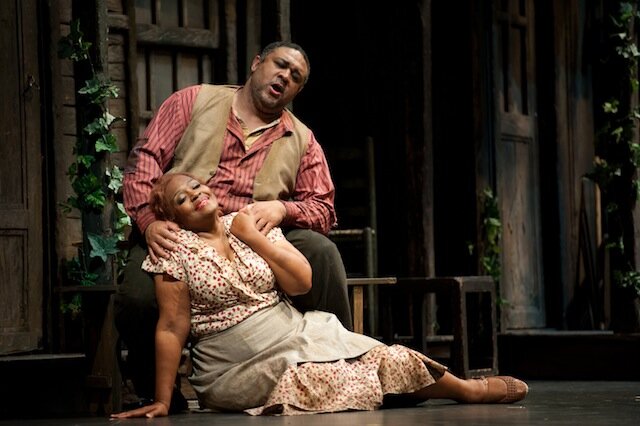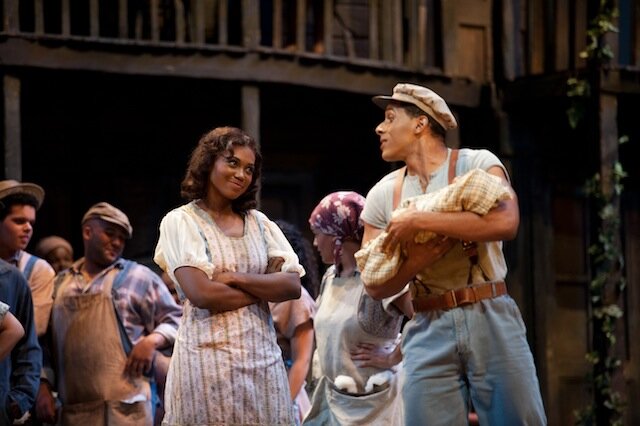
I’ve written before about what I think could be called, fairly, the runaway costs of higher education. But what, I wondered, does an economics professor think of this trend?
On the one hand, viewed with an economist’s famously dispassionate eye, perhaps we’re simply seeing the true value of higher education set.
On the other, as a professor of economics, there would be some skin in the game. Is this what’s best for students? For society?
For an acid test, I reached out to Dr. Eugene Silberberg, professor emeritus at the University of Washington, a hard-nosed microeconomist and the author of Principles of Microeconomics and Fiddle Tunes I Learned At the Tractor Tavern (and other places around Puget Sound).
Why microeconomics?
Well, as economist Yoram Bauman paraphrases P.J. O’Rourke: “Microeconomists are wrong about specific things, and macroeconomists are wrong about things in general.” It’s one thing to wring our hands over things not being like they used to be, it’s another to take a closer look at the mechanisms of change and ask if the market is getting something wrong. Still, as you will see from the following interview, Harry S Truman’s joke about the need for one-handed economists still stands.
Q: Is college considered a requirement for a larger group of the population these days? Everyone a knowledge worker?
Technology has changed the nature of education so drastically. I went to college because that’s what I decided to do. The big payoff now, and all the Census statistics show this, is the mastering of technology. Some of it’s specialized training, but even just the liberal skills of being able to think systematically about problems–those have become more valuable.
At the same time, high school has become of a much lower quality than it was when I was going to high school. Back 50 years ago, if you flunked your classes, they threw you out. Now society is loath to do that. When they did throw you out, it wasn’t like it was the end of the world. You could get a job. Now it’s kind of a disaster.
Q: What do you think is driving the increase in higher education costs?
That’s a puzzle which I don’t fully understand, why education has become more expensive. [Ed.: Here’s some extra reading on the reputed causes of increasing higher education costs, and whether it’s creating a bubble.]
It’s got to be almost all faculty salaries. You do have to have some administration, and there’s more administrators than we used to have. When I got the University of Washington in 1967, there was a dean of Arts & Sciences and a few associate deans. Now there must be 15 deans [some there to enforce federal regulations that didn’t exist previously]. These people have a way of multiplying themselves. So there’s a higher administrative cost. But I don’t think that explains the overall cost.
Scholarship has become more in demand in some ways. Obviously if you’re going to have a department of computer science, you’ve got to bid those people away from private industry, where they can sometimes make terrific amounts of money. And that’s going to be an expensive department. We didn’t have that in 1967–or nobody was making that kind of money, even adjusted for inflation. So what’s driving it? In some cases, it’s these fields that have become valuable. I have a friend in finance, and the last few years, the new hires have been getting paid more than full professors.
A lot of this is effected by big demographic shifts. There was a big baby boom that occurred after WWII and continued through the ’50s. We had this huge crush of students coming through. I was born before that, and benefited from it, because in the ’60 and ’70s, if you had a warm forehead you could get a job [as a professor]. Everyone was expanding. That was a major force driving up the cost of college.
I’ll give you a number. I went off to grad school in 1960. And I remember a conversation with an acquaintance who asked me, What do you want a PhD for? He said, You can teach in New York City public schools and get $5,000 or go to graduate school, give up four years of income, and the starting salary at the City College of New York (CCNY) is $5,500, not that much more. It’s not worth it.
Well, by the time 1964 came around, those salaries were no longer $5,500, they were $9,000 to $10,000–almost double in four years. And they continued to skyrocket. And that was all due to baby boomers.
Now the baby boomers are 65. They’re going to start retiring this decade, and there’s going to be a lot of new openings.
Q: What’s your recommendation for the ideal college tuition system?
There’s value judgements and then there’s science. Let me get my value judgements out of the way. I grew up in a Jewish family in New York. Starting with that generation of Americans, if you were Jewish and your kid didn’t go to college, you moved to another state.
I not only had free public education through high school, and a good one at that, I then went to CCNY, where the tuition was $10 a semester. In today’s dollars, maybe $70 a semester. Really cheap. Then I proceeded to get a fellowship from the federal government, it was called the National Defense Fellowship, for three years of graduate school, and another private foundation granted me a fourth year. So I emerged from graduate school with a Ph.D. and no debt. And went on to make, immediately, more than twice the average entry-level income.
If in fact I had taken out loans for all of that schooling, at the full cost of the education, no subsidy at all, and paid it all back I’d still be way ahead. It’s troubling to me, because I really believe in education and higher education in particular, but it’s almost for sure a net transfer of wealth from the poor to the rich. The people who go to college, for example, make on average over their working lives, in today’s dollars, something on the order of a million dollars more than a high school graduate.
Now that’s not all due to college. A lot of it, and economists have never come up with a hard number, is due to the fact that the people who go to college are in general more skilled and more capable than the people who, given the deck they were dealt, limits them to high school.
If it’s given to you free, it’s a transfer of wealth from other taxpayers. Now you have to modify that by how taxes are structured. Families making less than $50,000 per year pay only a small proportion of federal income taxes, but they pay state sales and other taxes. So it’s a complicated question. But if you ask me whether I’m in favor of really low-cost education, I’m in favor of that. I benefitted from it, it’s a terrific mechanism for upward mobility, and I believe in it.
Those views are qualified by the fact that it’s a benefit for the fairly well-to-do. The people who can’t go to college because they don’t have the capability of studying college-level material, who are never going to make more than the average, well, they’re subsidizing those people getting engineering and accounting degrees who are making much more than they are.
If you ask economists what their ideal solution would be, I think most of them would come down on–well, in general, we believe people should pay the full costs of their actions. That would mean paying full cost for your education, though that can be modified if you think there’s some overall, state benefit by having a more productive workforce. But in general you want people to pay, and finance it with loans. People used to pay full cost for medical school, and they got private loans for that.
But that worked because people who got into medical school almost always graduated, and they became doctors and had good incomes, and so it was a fairly low-risk loan for a bank. With just general liberal arts degrees it’s not a good loan, so the government has gotten into the act. The only way you could collect was to sell someone into slavery, so you could just walk away from it. The federal government had more leeway in terms of liens and putting pressure on people to repay than a bank had.
That would be the economically efficient ideal, but I don’t think it’s really practical, and there is this benefit to having people, who don’t have all that much wherewithal, meaning income, having the advantage of going to college and really improving their lives. Some sort of subsidization probably facilitates that in a way that I would approve of. But like I say, it’s hard not to mix up my own value judgements and hard economics.
Q: Doesn’t access to government-backed student loans then make it easier to raise tuition?
Yes, unambiguously. Whether it’s a good thing or not, I don’t know. But yes, it enables students to pay a greater proportion of the full cost of their education. Usually when you make loans, you have collateral. If you default, the lender has some recourse. If the lender has absolutely no recourse, they’ll never make anybody a loan for anything. If you’re buying a car, well, they can take the car back. It’s just a matter of liquidity in the present–in some sense you’re wealthy enough to buy the car, but the income’s not coming until a few years down the road and this is a way of borrowing against future income, so you can have the car now.
In the case of education, the asset is the human brain. You can’t repossess that, absent selling someone into slavery. The federal government can do this a little bit: If you go into ROTC and then sign up for the military, you can essentially sign up for this indentured servitude, and they’ll pay your tuition. However, if Boeing were to say, We’ll pay your way through engineering school, but then you have to come work for us for five years, that contract would simply be invalid. You could walk away from it and there’d be no recourse.
So government-backed student loans is an efficient way of providing this liquidity, so you could go to college and pay it off when your income became high, or higher, when you got your degree. Not all college degrees lead to immediately high earnings. A lot of times they initially look similar to what you had when you got out of high school.
Q: When universities like the University of Washington claim they need to raise prices to stay competitive, it sounds like tuition is in a feedback loop.
First of all, you don’t want to take almost anything people say like that at face value. In public universities there’s a big political component. They have to justify their actions in this way. Ultimately, it comes down to, What can we make this stuff for and what can we sell it for? And that’s the decision. If they think they can make more money by raising the price, they’ll do that. If they think they can make more by lowering the price, they’ll do that, and they’ll come up with any cockamamie reason to justify that. But I don’t place very much stock in what people say.
Q: Do universities ever turn to their economic departments for guidance on tuition-setting issues?
No. I’m certain the answer to that is “Never.” But there’s a famous saying in economics, there’s no such thing as a free lunch. Education is not free. You have to devote resources to provide an education, you have to hire faculty, it’s not free, it’s expensive. I’m not sure of the exact numbers, but I think the real cost is about twice [the tuition they’re charging]. Somebody’s got to pay for it.
If it’s a public university, what’s the political solution? It’s sort of a contract–more than just an implicit contract–that you move to Washington State, you pay taxes, and you know that there are these universities around. So one of the benefits is that your kids will have the opportunity to go there at a subsidized cost because you, at the moment, while your kids are little, are subsidizing all these other people. It’s like breaking the contract to suddenly raise it up. I think that’s one of the reasons why people are upset.
Also, they’re restricting the number of in-state tuition people, because they can make more money from out-of-state tuition levels. Personally I think that’s outrageous. To me, it’s breaking the social contract. People have been paying state taxes all along, subsidizing other state residents. I think the contract was that their kids could go to the University of Washington if they were qualified, and not have someone out of state take that slot. My solution would be to raise in-state tuition a little more.
But the things that they say in public, I don’t place much stock in that at all. Especially with public universities, it’s always with an eye to the legislature. A university president’s main job is to be a public spokesman and get more money from the legislature. That should be the official title: Chief Fundraiser. You have to be mindful of that. Legislators have to vote for these tuition subsidies. You can’t go around angering them.
Q: The University of Washington recently gained the ability, at long last, to set its own tuition. A good idea whose time has come?
In general, it’s a good idea. Most colleges have that ability. Again, it’s not a private university. It’s state funded, we all get checks from the State of Washington, and since the tax payers are paying the bill, it’s not like the university can do whatever it wants without input from the legislature. So there’s got to be some sort of balance, but exactly what that is I’m not sure.
When you look at these institutions from the outside, it’s a fabulous university. When you go inside, at any organization, you see all the waste and garbage and personal infighting. There’s no solution to it; it’s going to happen no matter how you organize it. But in the end, the universities we have here are really quite fine. I’m thinking mainly University of Washington and Washington State–not to slight the others—you can go there and get a really first class education.
You can also go there and get a really lousy education. I’ve known students who, well, they pass through. It has these subtle effects on them, but they’re not appreciative. Maybe it’s just youth. A lot of students could care less if a class is taught by an actual professor or a graduate student. I’ve always told students, When you look at the schedule, if there’s one taught by a professor of something, take that class.
Q: What’s one way you would bring costs down?
There are a lot of people running around with Ph.D.’s nowadays with very poor job prospects. It seems like some entrepreneur could round these people up and have a college–have a college like what I went to at CCNY. There was no pretense of it being a university. It was a four-year college. I got a good education there. It seems like someone could go into that business and have a much lower cost private education than what exists. I don’t know why it’s not happening. There’s got to be a reason, but I don’t know what it is.








 You’re bound to hear the term “rebuilding” if you hang around a sports fan for a few hours–especially a Seattle one. The construction analogy refers to the process of turning a losing team into a winning one. Last week, Seahawks head coach Pete Carroll and GM John Schneider took rebuilding to an extreme, dropping C4 on the edifice that was the Seahawks’ roster.
You’re bound to hear the term “rebuilding” if you hang around a sports fan for a few hours–especially a Seattle one. The construction analogy refers to the process of turning a losing team into a winning one. Last week, Seahawks head coach Pete Carroll and GM John Schneider took rebuilding to an extreme, dropping C4 on the edifice that was the Seahawks’ roster.






